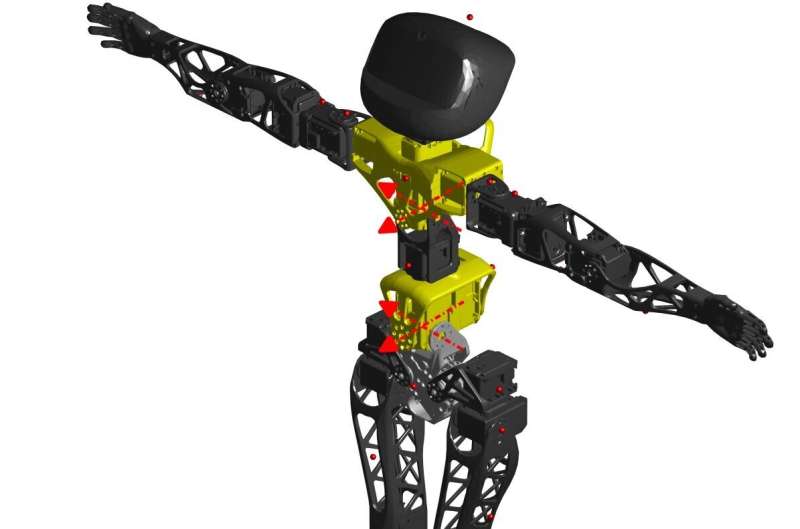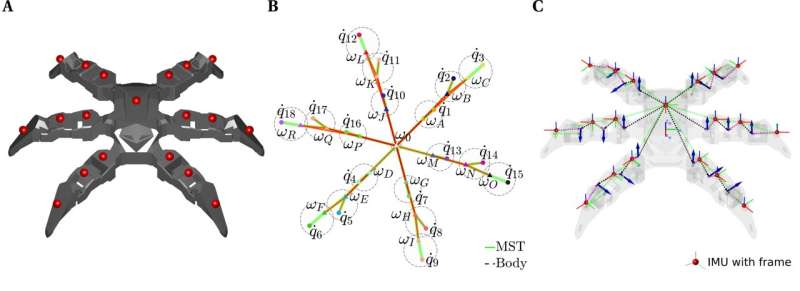December 19, 2023 report
This article has been reviewed according to Science X's editorial process and policies. Editors have highlighted the following attributes while ensuring the content's credibility:
fact-checked
peer-reviewed publication
trusted source
proofread
Improving a robot's self-awareness by giving it proprioception

A pair of roboticists at the Munich Institute of Robotics and Machine Intelligence (MIRMI), Technical University of Munich, in Germany, has found that it is possible to give robots some degree of proprioception using machine-learning techniques. In their study reported in the journal Science Robotics, Fernando Díaz Ledezma and Sami Haddadin developed a new machine-learning approach to allow a robot to learn the specifics of its body.
Giving robots the ability to move around in the real world involves fitting them with technology such as cameras and pressure sensors—data from such devices is then processed and used to direct the legs and/or feet to carry out appropriate actions. This is vastly different from the way animals, including humans, get the job done.
With animals, the brain is aware of its body state—it knows where the hands and legs are, how they work and how they can be used to move around or interact with the environment. Such knowledge is known as proprioception. In this new effort, the researchers conferred similar abilities to robots using machine-learning techniques.
The idea behind their system is to add sensors to the body that give feedback about individual body parts. For example, the sensors know where the knee is, which way it bends and the degree of bending at any given time. The researchers found that overlap between sensors and the data they send to a central processor allows for an increased overall awareness of a body state.
They also found that a robot could, to some extent, learn to understand its body without pre-learned data—instead, they simply instigate what they describe as "motor babbling"—where all the servo motors used to power a robot are fired at random at the same time. This allows the robot to begin building a base of information that can be used to learn how its parts work.

The researchers then tested their approach on multiple kinds of robots, including a six-legged spider bot, a humanoid and an arm. They found that their approach allowed all the types of robots tested to develop some sense of their own bodies, their parts and how they worked together.
More information: Fernando Díaz Ledezma et al, Machine learning–driven self-discovery of the robot body morphology, Science Robotics (2023). DOI: 10.1126/scirobotics.adh0972
© 2023 Science X Network

















